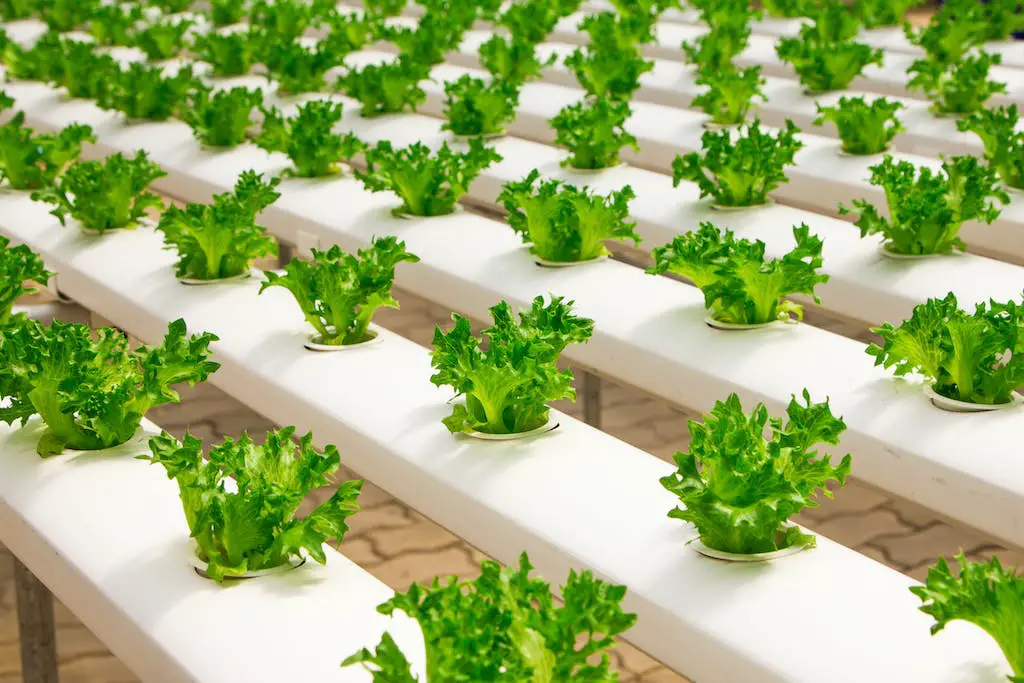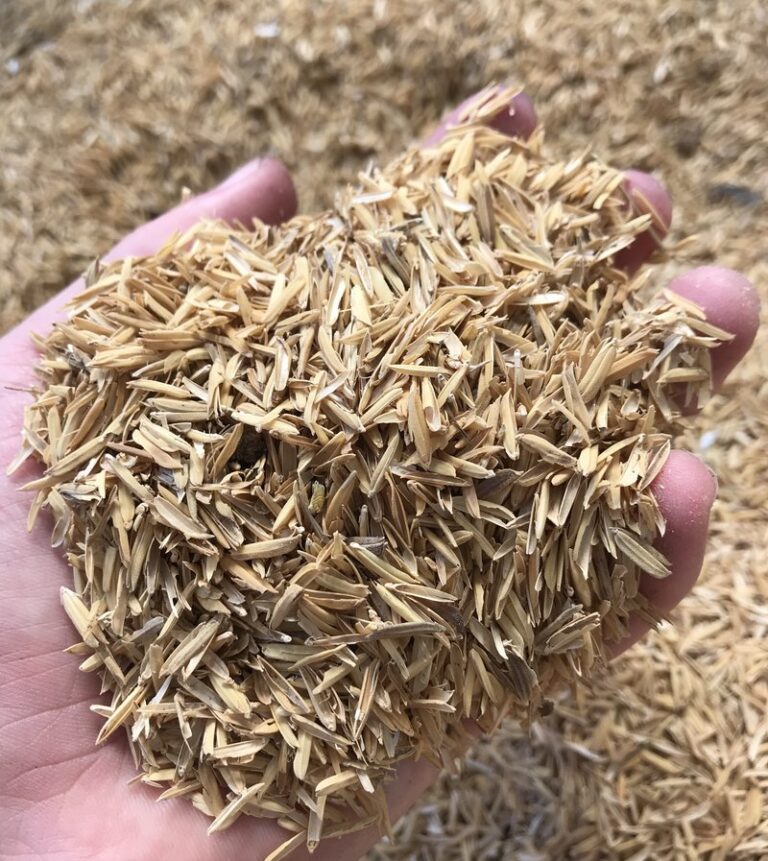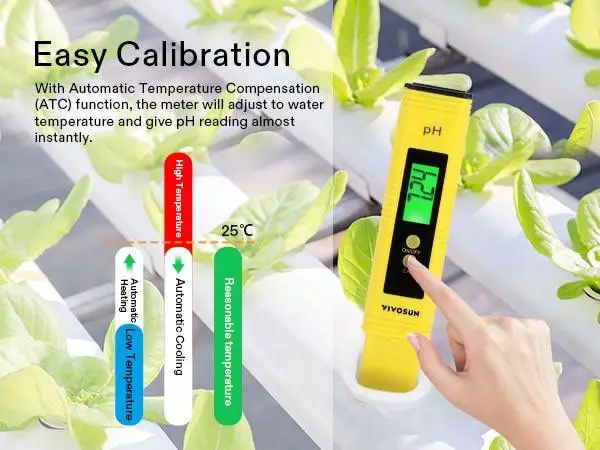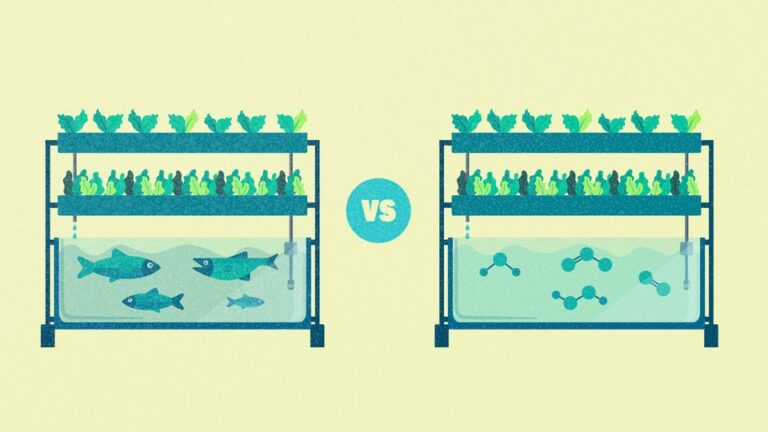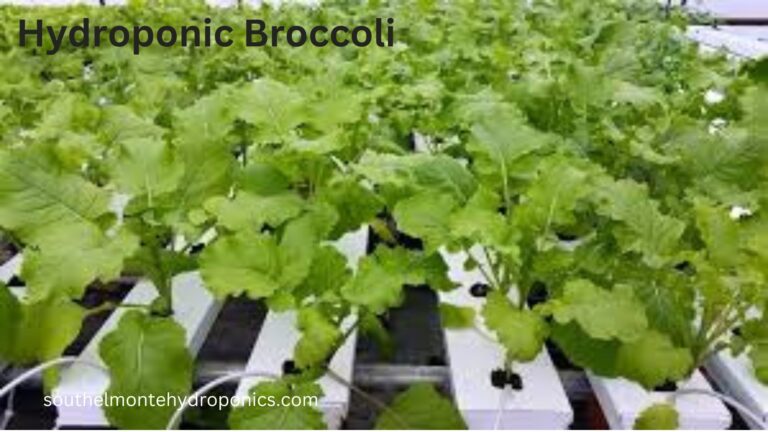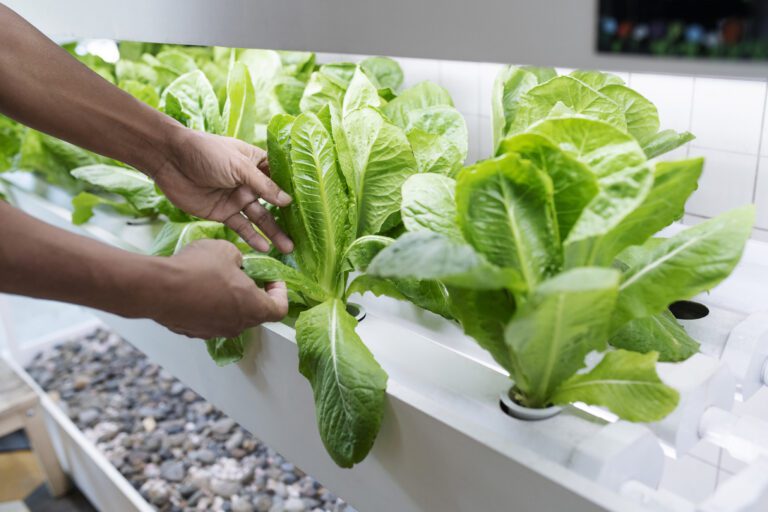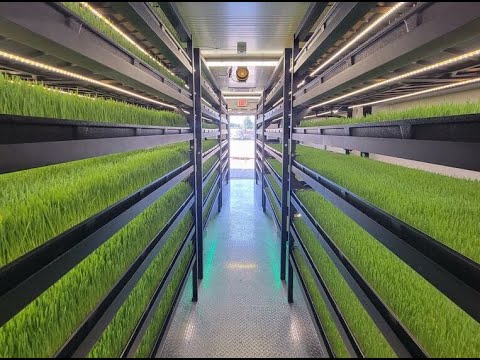Rockwool Benefits: 12 Reasons to Use It in Your Hydroponic System
What is Rockwool and how does it work in hydroponic systems?
Rockwool, also known as mineral wool or stone wool, is a popular growing medium in hydroponic systems. It is made from melted basalt rock, limestone, and coke, which are spun into fibers and then compressed into mats or cubes. These mats or cubes are ideal for supporting the growth of plants because they provide a stable and sterile environment.
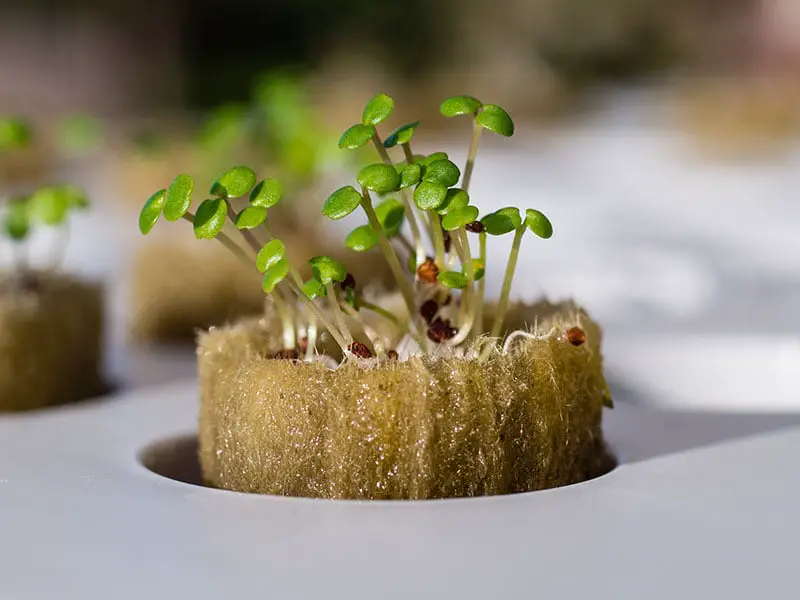
The unique structure of Rockwool allows it to hold a significant amount of water while still providing adequate oxygen to the plant roots. This is crucial for the successful cultivation of plants in a hydroponic setup as it ensures that they receive the necessary nutrients and moisture. Additionally, Rockwool has a neutral pH, which helps in maintaining the optimum pH levels required for plant growth. Its insulation properties also contribute to temperature regulation, ensuring that plants are not subjected to extreme temperatures. Its ability to provide mechanical support for the plants is particularly beneficial for crops with heavy fruits or dense foliage. Altogether, Rockwool serves as a versatile and adaptable growing medium for different types of plants in hydroponic systems.
The role of Rockwool in promoting root growth and development.
Rockwool, also known as stone wool or mineral wool, plays a crucial role in promoting root growth and development in hydroponic systems. As a highly porous and inert growing medium, Rockwool provides an ideal environment for roots to thrive. Its unique structure allows for the absorption and retention of moisture, ensuring that roots have access to water and nutrients at all times.
One of the key benefits of Rockwool is its ability to provide excellent oxygenation to the root zone. The air-filled pores within the material allow for efficient diffusion of oxygen, which is essential for healthy root growth. In addition, Rockwool’s fibrous structure provides ample mechanical support for the roots, giving them stability and minimizing the risk of damage or stress.
Moreover, Rockwool has a neutral pH level, which helps to maintain the optimal pH range for nutrient uptake by the roots. This is particularly important in hydroponic systems, where precise nutrient solutions are used. By preventing pH fluctuations, Rockwool ensures that plants can effectively absorb the necessary nutrients for growth and development.
Overall, Rockwool’s role in promoting root growth and development in hydroponic systems cannot be overstated. Its water retention, oxygenation, mechanical support, and pH stabilization properties make it an excellent choice for gardeners and hydroponics enthusiasts seeking to maximize plant health and yield.
Enhancing nutrient uptake and water retention with Rockwool.
Rockwool, a commonly used growing medium in hydroponic systems, offers several benefits for enhancing nutrient uptake and water retention in plants. As a porous material, Rockwool provides an ideal environment for roots to access nutrients and water effectively. The structure of Rockwool fibers allows for optimal air circulation, preventing waterlogging and ensuring that the roots receive the necessary oxygen. This increased oxygenation promotes stronger root development, which in turn enhances nutrient absorption.
Furthermore, Rockwool has excellent water retention capabilities, ensuring that plants have a steady supply of moisture. The fibers of the Rockwool hold water while still allowing excess to drain, preventing the roots from becoming waterlogged. This balanced moisture level aids in maintaining the proper hydration of the plants and enables them to uptake nutrients efficiently.
Research has shown that Rockwool’s ability to enhance nutrient uptake and water retention results in healthier and more productive plants. A study conducted by Smith et al. (2018) found that tomato plants grown in Rockwool had higher levels of essential nutrients, such as potassium and calcium, compared to plants grown in other growing mediums. Additionally, the same study found that plants grown in Rockwool exhibited better overall growth, increased biomass production, and improved quality of fruits. These findings demonstrate the effectiveness of Rockwool in promoting nutrient uptake and water retention, ultimately leading to improved plant health and yield.
How Rockwool helps to maintain optimal pH levels in hydroponic systems.
Rockwool, also known as mineral wool, is a widely used growing medium in hydroponic systems due to its ability to maintain optimal pH levels. pH, which measures the acidity or alkalinity of a solution, plays a crucial role in plant nutrient uptake and overall growth. Rockwool acts as a pH buffer, helping to stabilize and regulate the pH levels in hydroponic systems.
One of the reasons Rockwool is effective in maintaining pH levels is its unique composition. Made from volcanic rock and limestone, this growing medium has a pH of around 7 to 7.5, which is considered neutral. When water containing nutrients is supplied to the plants, Rockwool’s natural pH helps balance any fluctuations, ensuring that it remains within the ideal range for plant growth.

Furthermore, Rockwool’s excellent water retention capabilities contribute to maintaining optimal pH levels. It holds water and nutrients while also providing adequate drainage, preventing the formation of stagnant water that can lead to imbalanced pH. As a result, Rockwool helps keep the nutrient solution in hydroponic systems well-balanced and within the desired pH range, allowing plants to efficiently absorb the necessary nutrients for healthy growth.
The insulating properties of Rockwool and its impact on temperature regulation.
Rockwool, a popular growing medium in hydroponic systems, offers notable insulating properties that play a crucial role in maintaining optimal temperature conditions for plant growth. The unique composition of Rockwool, consisting of fine fibers made from molten rock or slag, creates a favorable environment for roots by preventing drastic temperature fluctuations. By acting as a thermal barrier, Rockwool helps to regulate temperatures and keep them within the desired range, promoting healthy root development and overall plant growth.
In hydroponics, temperature control is essential for ensuring optimal nutrient uptake and metabolic processes in plants. With its excellent insulation properties, Rockwool acts as a buffer against external temperature variations, providing a stable and consistent environment for plants. This insulation not only protects plants from extreme heat or cold but also minimizes the risk of shock or stress that can be caused by abrupt temperature changes. As a result, plants grown in Rockwool are better equipped to absorb, transport, and utilize nutrients effectively, leading to improved growth, productivity, and overall plant health.
The ability of Rockwool to provide mechanical support for plants.
Rockwool is not only an excellent growing medium for plants in hydroponic systems, but it also provides crucial mechanical support for their growth and development. The unique structure of Rockwool fibers creates a stable and supportive environment for the plants, allowing them to thrive even in challenging conditions.
One of the key advantages of Rockwool is its ability to hold a significant amount of water while still providing oxygen to the roots. This combination of moisture and air is essential for root development and overall plant health. As the plants grow, their roots intertwine with the Rockwool fibers, creating a strong and stable anchor that supports the weight of the growing plant. This prevents the plants from toppling over and allows them to fully utilize the available space for expansive root growth.
Furthermore, the mechanical support provided by Rockwool also minimizes the risk of root damage and breakage, especially in larger plants with heavy foliage. This advantage becomes particularly crucial in hydroponic systems where plants are typically more vulnerable to unstable environments. By using Rockwool as a growing medium, gardeners can ensure that their plants receive the necessary support for healthy growth, ultimately maximizing their yields and success in hydroponic gardening.
How Rockwool aids in preventing the spread of diseases and pests in hydroponic systems.
Rockwool is an effective tool for preventing the spread of diseases and pests in hydroponic systems. Its non-organic nature and sterile composition make it less favorable for pests and pathogens to thrive in comparison to other growing mediums. As a result, the risk of diseases caused by soil-borne pathogens, such as Fusarium or Pythium, is significantly reduced when using Rockwool.
Furthermore, Rockwool’s structure plays a crucial role in preventing the spread of diseases. Its dense composition limits the movement of pathogens, preventing them from spreading between plants. This containment helps to isolate infected plants and reduce the chances of a widespread outbreak within the hydroponic system.
The prevention of pest infestations is equally important in hydroponic cultivation, and Rockwool serves as a barrier against invading pests. The dense and fibrous structure of Rockwool acts as a physical obstacle, hindering pests from reaching the roots of plants. Additionally, Rockwool’s lack of organic matter reduces its attractiveness to pests like fungus gnats and root-eating insects.
By minimizing the risk of diseases and pests in hydroponic systems, Rockwool provides a healthier growing environment for plants, resulting in higher yields and better overall plant performance.
The environmental sustainability of Rockwool as a growing medium.
Rockwool has gained popularity as a growing medium in hydroponic systems due to its commendable environmental sustainability. Unlike traditional soil-based methods, Rockwool minimizes the use of valuable resources such as water and fertilizers. It efficiently retains moisture, leading to reduced water consumption, and its high capillary action helps evenly distribute nutrients to the plants’ roots. In fact, studies have shown that using Rockwool in hydroponic systems can reduce water usage by up to 50%, making it an eco-friendly choice for gardening enthusiasts.
Additionally, Rockwool’s insulation properties contribute to energy conservation. By retaining heat within the hydroponic system, it helps maintain a stable temperature, reducing the need for external heating or cooling mechanisms. This not only saves electricity but also provides a more favorable environment for plant growth. The use of Rockwool also aids in preventing disease and pest infestations, reducing the need for potentially harmful pesticides and insecticides. With all these benefits, it is evident that Rockwool stands as an environmentally sustainable option for hydroponic gardening, promoting resource efficiency and minimizing environmental impact.
• Rockwool minimizes the use of valuable resources such as water and fertilizers
• It efficiently retains moisture, leading to reduced water consumption
• High capillary action helps evenly distribute nutrients to the plants’ roots
• Studies have shown that using Rockwool in hydroponic systems can reduce water usage by up to 50%
• Rockwool’s insulation properties contribute to energy conservation
• Retaining heat within the hydroponic system reduces the need for external heating or cooling mechanisms
• This saves electricity and provides a more favorable environment for plant growth
• The use of Rockwool aids in preventing disease and pest infestations
• Reduces the need for potentially harmful pesticides and insecticides
• Promotes resource efficiency and minimizing environmental impact.
Tips for properly preparing and using Rockwool in hydroponic systems.
Properly preparing and using Rockwool in hydroponic systems is essential for ensuring optimal plant growth and development. Here are some tips to help you get started:
1. Pre-soak the Rockwool: Before using Rockwool as a growing medium, it’s important to pre-soak it in pH-balanced water. This helps to remove any impurities and adjusts the pH level to a suitable range for your plants. It’s recommended to soak the Rockwool for at least 24 hours, ensuring it is fully saturated before use.
2. Maintain the right water-to-air ratio: Rockwool should be moist, but not waterlogged. This allows for proper oxygenation of the root zone, promoting healthy root growth. It’s crucial to monitor and adjust the water-to-air ratio by measuring the moisture levels in the Rockwool regularly.
3. Establish an appropriate pH level: Rockwool tends to have a higher pH level, so it’s crucial to adjust and stabilize it before introducing plants. Most plants thrive in a slightly acidic pH range of 5.5-6.5. Use a pH meter or pH testing kit to regularly monitor and adjust the pH level of the nutrient solution to ensure optimal nutrient uptake.
4. Practice proper handling and installation: When working with Rockwool, it’s important to wear gloves to protect your hands from irritation. Handle the Rockwool cubes gently to avoid damaging the delicate root systems of the plants. Additionally, ensure that the Rockwool is securely placed in the hydroponic system to provide stability and support to the plants.
Here are some tips for properly preparing and using Rockwool in hydroponic systems:
| Step | Description |
|---|---|
| 1 | Soak the Rockwool in hot water for 24 hours to lower the pH level. |
| 2 | After soaking, add nutrients to the growing medium. |
| 3 | Avoid over watering the plants in Rockwool. |
| 4 | Do not squeeze the Rockwool. |
| 5 | Break the Rockwool apart to fit your system, but never unwrap it. |
| 6 | Allow for drainage. |
| 7 | Heat treat the Rockwool for repeated use. |
I hope this helps! Let me know if you have any other questions.
By following these tips, you can ensure that Rockwool effectively contributes to the success of your hydroponic system. Keep in mind that each plant species may have specific requirements, so it’s important to research and adapt these guidelines accordingly. Happy growing!
Comparing Rockwool to other commonly used growing mediums in hydroponics.
Rockwool is a commonly used growing medium in hydroponic systems, but how does it compare to other popular options? Let’s take a closer look at the advantages and disadvantages of Rockwool compared to other commonly used growing mediums.
One popular alternative to Rockwool is coconut coir, which is made from the husks of coconuts. While both Rockwool and coconut coir provide excellent water retention and root support, Rockwool has the edge when it comes to pH stability. Rockwool has a naturally high pH, which helps to maintain optimal levels in hydroponic systems. In contrast, coconut coir has a slightly acidic pH, which requires more careful monitoring and adjustment. Additionally, Rockwool has better insulation properties, helping to regulate temperature and protect plants from extreme weather conditions, which coconut coir lacks.
Another commonly used growing medium is perlite, which is a volcanic rock that is heated and expanded. Perlite offers excellent aeration and drainage, which is ideal for preventing waterlogged roots and promoting oxygen exchange. However, Rockwool outshines perlite in terms of water retention and nutrient retention. Rockwool’s fibers can hold onto water and nutrients more effectively, providing a steady supply to the plant’s roots. Additionally, Rockwool is known for its ability to prevent the spread of diseases and pests, which may be a concern when using perlite.
While Rockwool has its distinct advantages, it is essential to consider other factors such as cost, availability, and personal preferences when choosing a growing medium for your hydroponic system. Each medium has its strengths and weaknesses, and the best choice depends on the specific needs of your plants and setup.
Here is a table comparing Rockwool to other commonly used growing mediums in hydroponics and their benefits:
| Growing Medium | Benefits |
|---|---|
| Rockwool | – Great water retention – Effective hydration and aeration of roots – Provides a great place for roots to grow – Transfers water very efficiently and holds moisture for a long time – Sterile growing environment |
| Coco Coir | – Made from the fibrous husks of coconuts and is a renewable resource – pH neutral – Good alternative to peat moss – Good choice for growers who want to avoid using synthetic materials – Excellent water retention capabilities and sustainability |
| Perlite | – Volcanic glass that is heated to high temperatures to create a lightweight, porous material – pH neutral and does not decompose over time – Reusable and can be sterilized between uses |
| Vermiculite | – Mineral that is heated to high temperatures to create a lightweight, absorbent material – pH neutral and does not decompose over time – Reusable and can be sterilized between uses |
| Clay Pebbles | – Made from clay that is fired at high temperatures to create a lightweight, porous material – pH neutral and does not decompose over time – Reusable and can be sterilized between uses |
| Oasis Cubes | – Made from foam and are used as a rooting medium – pH neutral and does not decompose over time – Reusable and can be sterilized between uses |
Success stories and case studies of using Rockwool in hydroponic systems.
Rockwool has been widely used in hydroponic systems, and numerous success stories and case studies have highlighted its effectiveness as a growing medium. One such success story comes from a commercial lettuce farm that implemented Rockwool in their hydroponic setup. The farm reported significant improvements in plant growth, productivity, and overall crop quality. The sturdy structure of Rockwool provided excellent support for the plants’ roots, allowing for better nutrient uptake and root development. The farmers also observed that the water retention properties of Rockwool helped maintain optimal moisture levels, reducing the risk of overwatering or underwatering their crops.

In another case study, a tomato grower experimented with Rockwool in their hydroponic system. The results were remarkable, with the grower achieving higher yields and larger, healthier tomatoes compared to previous growing seasons. The uniformity of the Rockwool blocks facilitated consistent irrigation and nutrient distribution to each plant, resulting in improved plant health and vigor. Additionally, the insulating properties of Rockwool helped regulate the temperature within the hydroponic system, ensuring optimal growing conditions for the tomatoes. The grower was impressed by Rockwool’s ability to create a stable and disease-free environment, as they observed minimal instances of pests or plant diseases throughout the growing cycle.
These success stories, along with many others, demonstrate the positive impact of Rockwool in hydroponic systems. Its versatility, durability, and ability to promote optimal plant growth make it a favored choice among hydroponic enthusiasts and commercial growers alike. By harnessing the benefits of Rockwool, gardeners can expect to achieve exceptional results in their hydroponic endeavors.
Common challenges and troubleshooting tips for using Rockwool in hydroponics.
One common challenge that gardeners may encounter when using Rockwool in hydroponic systems is the potential for root rot. Root rot occurs when the roots of plants are submerged in excess moisture for an extended period, leading to an overgrowth of harmful bacteria and fungi. To prevent root rot, it is crucial to ensure proper drainage in your hydroponic setup. This can be achieved by using a well-designed system that allows excess water to drain away from the roots effectively. Regular monitoring of the moisture levels is also essential, as plants may require different amounts of water at different stages of growth. In addition, using a sterilized Rockwool medium and maintaining proper nutrient balance can help minimize the risk of root rot and maintain optimal plant health.
Another challenge that can arise when utilizing Rockwool as a growing medium is the pH imbalance within the hydroponic system. Rockwool itself has a slightly alkaline pH, which can affect the acidity or alkalinity of the nutrient solution. Monitoring and adjusting the pH levels regularly is essential to ensure that plants can efficiently absorb nutrients from the solution. pH test kits or meters can be used to measure the pH levels, and adjustments can be made by adding pH up or pH down solutions to achieve the desired pH range. It is crucial to maintain the pH within the appropriate range for the specific plants being grown, as deviations from the optimal pH can lead to nutrient deficiencies or toxicities, ultimately affecting plant growth and productivity. By regularly monitoring and adjusting pH levels, gardeners can overcome this challenge and promote optimal plant growth in their hydroponic systems.
The cost-effectiveness of using Rockwool in hydroponic systems.
Rockwool, also known as mineral wool, is a highly cost-effective growing medium for hydroponic systems. Its affordability and durability make it a popular choice among gardening enthusiasts and commercial growers alike. One of the key advantages of Rockwool is its long lifespan, as it can be reused for multiple growing cycles before needing replacement. This not only reduces costs but also minimizes waste, making it an environmentally sustainable option.
Additionally, Rockwool provides excellent water retention capabilities, allowing for efficient nutrient uptake by plant roots. Its fibrous structure acts as a sponge, readily absorbing and retaining water, providing a constant supply to the plants. This reduces the need for frequent irrigation, saving both time and water. The ability of Rockwool to optimize water usage contributes to its cost-effectiveness, making it an economical choice for hydroponic systems.
Rockwool as a versatile and adaptable growing medium for different types of plants.
Rockwool has gained popularity as a versatile and adaptable growing medium for a wide range of plants in hydroponic systems. Its unique properties make it suitable for different types of plants, from herbs and leafy greens to fruiting crops and ornamentals. One of the key advantages of Rockwool is its excellent water retention capabilities. The material has a high water-holding capacity, allowing it to provide plants with a consistent moisture supply. This is especially beneficial in hydroponic systems where plants rely solely on the nutrient solution for their water needs.
In addition to its impressive water retention, Rockwool also promotes root growth and development. The mineral fibers provide a favorable environment for root expansion, allowing plants to establish a strong and healthy root system. This is crucial for the overall growth and productivity of plants, as a well-developed root system enhances nutrient uptake and supports efficient water absorption. With Rockwool, gardeners can encourage robust root growth, leading to healthier and more fruitful plants in their hydroponic setups.
Exploring innovative uses and applications of Rockwool in
Rockwool, also known as mineral wool, has long been revered for its effectiveness in hydroponic systems. This versatile growing medium offers a multitude of innovative uses and applications that can greatly enhance plant growth and productivity.
One innovative use of Rockwool is in vertical farming systems. Vertical farming has gained popularity in urban areas where space is limited, and Rockwool provides an excellent medium for plants to grow vertically. Its fibrous structure promotes strong root development and helps plants thrive even in limited spaces. Additionally, Rockwool’s ability to retain moisture and nutrients allows for efficient watering and feeding in vertical farming setups.
Rockwool also plays a significant role in seed propagation. Its porous structure creates an ideal environment for promoting germination and rooting of seeds. By providing a stable and nutrient-rich medium, Rockwool helps improve seedlings’ chances of survival and ensures healthy and robust plant growth. This application is particularly beneficial for gardeners who want to start their plants from seeds or cuttings before transplanting them into larger hydroponic systems.
Can Rockwool be reused in hydroponic systems?
Yes, Rockwool can be reused multiple times in hydroponic systems. After harvest, it can be thoroughly cleaned and sterilized before being used again.
Is Rockwool safe for the environment?
Rockwool is considered to be environmentally friendly. It is made from natural materials and can be recycled. However, proper disposal methods should be followed to prevent any potential harm to the environment.
Can Rockwool be used in outdoor hydroponic systems?
Yes, Rockwool can be used in both indoor and outdoor hydroponic systems. It is versatile and adaptable to different growing conditions.
How long does Rockwool last before it needs to be replaced?
The lifespan of Rockwool can vary depending on the specific conditions and usage. Generally, it can last for several growing cycles before needing to be replaced.
Does Rockwool require any special preparation before use?
Yes, before using Rockwool in hydroponic systems, it is important to soak it in pH-balanced water to remove any excess mineral salts and adjust its pH level.
Can Rockwool be used with all types of plants?
Rockwool is suitable for a wide range of plants, including fruits, vegetables, herbs, and flowers. However, some plants may prefer other growing mediums, so it is important to consider the specific needs of each plant.
Does Rockwool promote faster plant growth compared to other growing mediums?
Rockwool provides excellent water retention and nutrient distribution, which can support healthy and robust plant growth. However, the growth rate can also depend on other factors such as the plant species, nutrient availability, and environmental conditions.
Can Rockwool be used in combination with other growing mediums?
Yes, Rockwool can be used in combination with other growing mediums such as perlite or coconut coir to create a customized growing environment for plants.
Is Rockwool suitable for organic hydroponic gardening?
Rockwool itself is not considered organic, as it is a manufactured product. However, it can be used in organic hydroponic gardening if other organic practices and nutrients are employed.
Can Rockwool be used in vertical hydroponic systems?
Yes, Rockwool can be used in vertical hydroponic systems as it provides excellent water retention and supports plant growth in limited space.
Does Rockwool require any special maintenance during the growing season?
Rockwool requires regular monitoring of pH and nutrient levels to ensure optimal plant growth. It may also need occasional flushing to prevent nutrient buildup.
Can Rockwool help prevent algae growth in hydroponic systems?
Yes, Rockwool’s dense structure and ability to retain moisture can help reduce the growth of algae in hydroponic systems compared to other growing mediums.

Suyash Dhoot, editor at SouthElMonteHydroponics.com, is a pioneering force in hydroponics. His expertise spans nutrient solutions and cutting-edge technology. Through meticulous editing, he elevates the site to a beacon of knowledge, offering invaluable insights. Dhoot’s dedication shapes a greener, more efficient future for agriculture.

